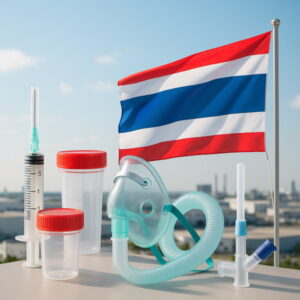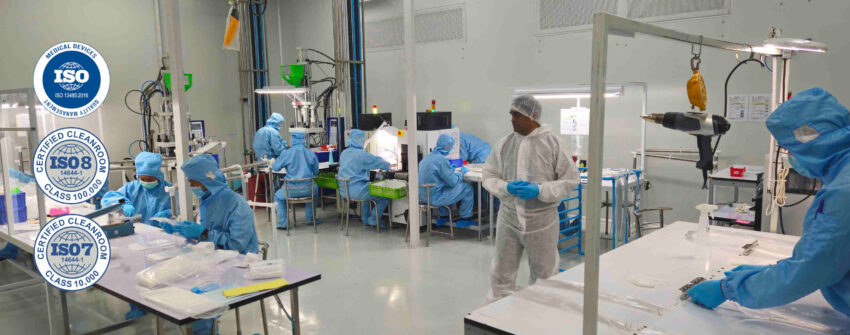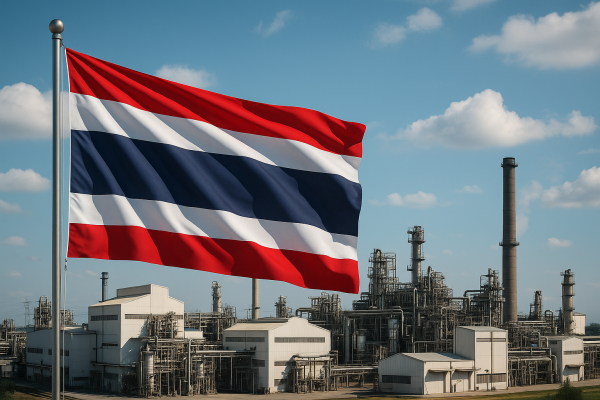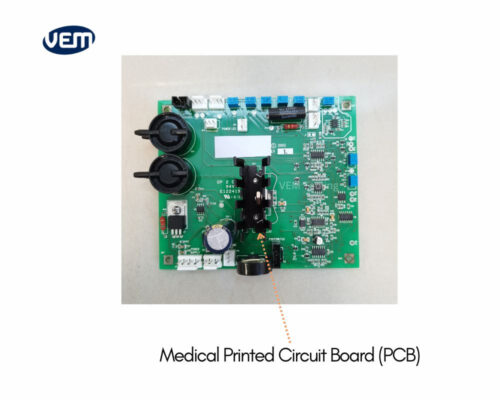Clients are facing rising costs and import/export issues with medical device production in China. VEM Medical helps companies with an expedited medical device manufacturing transfer, usually plastic injection molding and assembly projects from China – where costs continue to rise – to Thailand with supply chains intact.
Why More Companies Are Moving Medical Device Manufacturing Out of China
Over the past decade, China has seen a steady rise in manufacturing costs. Once known for low labor rates, the country is no longer the budget-friendly option it used to be, especially when it comes to complex, high-value products like medical devices. While product quality in China has improved, many companies are now re-evaluating their manufacturing strategies.
A key reason for this shift is growing geopolitical uncertainty. Trade tensions, tariffs, and supply chain disruptions have highlighted the risks of overdependence on a single country. To mitigate these risks, many manufacturers are turning to Southeast Asia for diversification.
At VEM Medical, we specialize in helping medical device companies relocate or expand their production to Thailand. Thailand offers strong international trade relationships, political stability, and an increasingly skilled labor force. Its strategic location also allows for a hybrid supply chain model, where value-added production is handled locally, while components like electronics can still be sourced from China.
This balanced approach helps reduce costs, improve supply chain resilience, and maintain high-quality standards. If you’re considering a manufacturing transfer out of China, Thailand offers a compelling alternative, especially for companies in the highly regulated and precision-focused medical device industry.
Case Study: U.S. Medical Device Company Moves Production to Thailand
A U.S.-based medical device manufacturer had long relied on China for its injection molding and assembly operations. However, in recent years, the company faced rising production costs and increasing delays in importing raw materials and components into China. The situation was further worsened by events like COVID-19, which exposed the risks of relying too heavily on a single country, bringing the entire supply chain to a halt.
Initially, the company explored relocating its manufacturing operations to the U.S. or Mexico. But with the majority of its component suppliers still based in China, moving completely out of Asia wasn’t feasible without risking even more disruption and cost.
Instead, we proposed a manufacturing transfer of their medical device product to Thailand.

Key Requirements Before Transferring Production
Before moving production, the client had clear requirements: reduce manufacturing costs while continuing to use only their pre-approved suppliers. They did not want to redesign the product or face additional technical challenges. This meant that many critical materials and components would still be sourced from China, where pricing and supplier reliability were well understood.
In addition, the new facility needed to meet strict regulatory and operational standards. An ISO 13485-certified environment with a Class 8 cleanroom for injection molding was essential. Tooling was another key factor, while complex molds are often still made in China due to expertise and cost advantages, any new location had to offer local tooling support for maintenance, repairs, and engineering changes. Ideally, this would mean having an in-house tool shop with full capabilities.
Fortunately, VEM Thailand checked all the boxes. With certified facilities, cleanroom production, and an internal tool shop, the first major hurdle was cleared.
How We Got Started and What Was Needed Upfront
While the client was enthusiastic about relocating to Thailand, we also had clear requirements to ensure a smooth and successful production transfer. As the new manufacturing partner, it’s our responsibility to set up operations efficiently and to meet all quality and regulatory standards. To do that, we needed the following key information:
- Complete part data for all plastic injection molded components, including up-to-date 3D and 2D drawings.
- Tooling design files, which are essential for ongoing maintenance and potential engineering changes. This can be a challenge when previous suppliers either don’t share designs or provide outdated versions after modifying the tools.
- Standard Operating Procedures (SOPs) for both production and assembly.
- Approved supplier list for critical components we would need to source.
- Field test procedures and any special product validation requirements.
- Packaging, labeling, and traceability standards to ensure full compliance.
- Medical device documentation, such as the Design Master File and related regulatory files.
Collecting and validating this information early on is crucial to minimize production delays and quality risks.

Medical Device Manufacturing Transfer – Solution and Results
The first step was advising the customer to run extra production in China to build a safety stock. This buffer allowed us to take a conservative approach and ensure there were no supply interruptions during the transfer phase.
Once the stock was secured, the tools were prepared for shipment. It’s essential to have a trusted partner on-site to supervise tool preparation, making sure all inserts, documentation, and components are included. Missing parts or incorrect tool configurations can cause serious delays.
The complete medical device manufacturing transfer from China to Thailand took five weeks, plus one week for shipping. Within just six weeks, the new production line at VEM Medical Thailand was fully operational.
Today, this medical device is being manufactured in our ISO 13485-certified facility in Thailand, at a lower cost and with improved logistics efficiency. Raw materials from the U.S. are imported more smoothly, and components from China continue to flow without customs delays. The result: cost savings and reduced risk, thanks to a more resilient and diversified supply chain.
At VEM Medical, we combine global expertise with local execution. Our diverse team, made up of professionals from Thailand, India, Germany, and Cambodia, drives innovation, quality, and success across every project.
Ready to Transfer Your Production to Thailand?
If you’re considering moving your medical device manufacturing to Thailand, get in touch with us. Production transfers have become one of our most in-demand services in recent years, especially since COVID-19 exposed the risks of single-country sourcing.
At VEM Medical, we have dedicated teams specializing in smooth, compliant manufacturing transfers. Your product is in expert hands, from planning and tooling to full-scale production.
Contact us today to explore how we can support your project.




